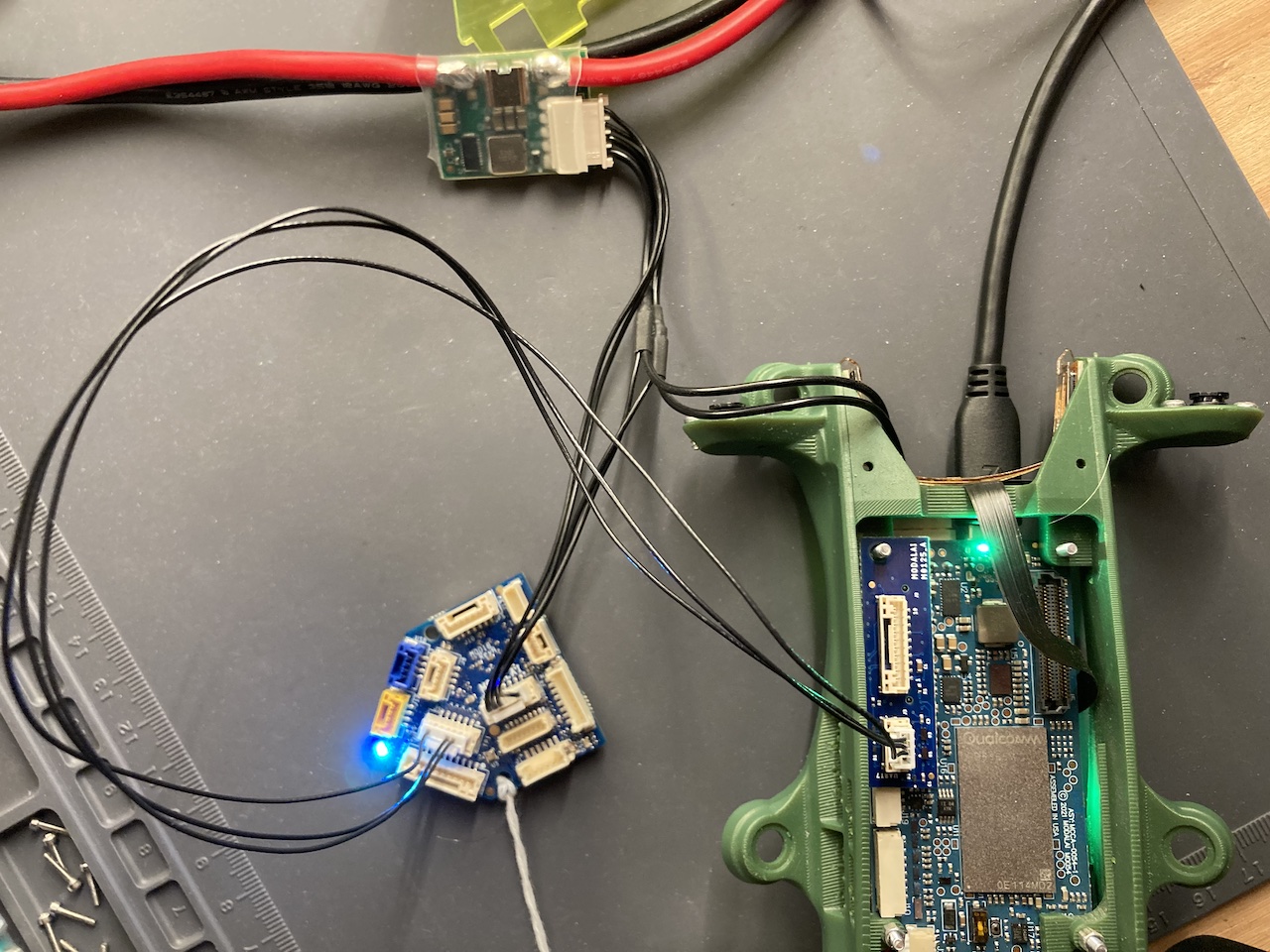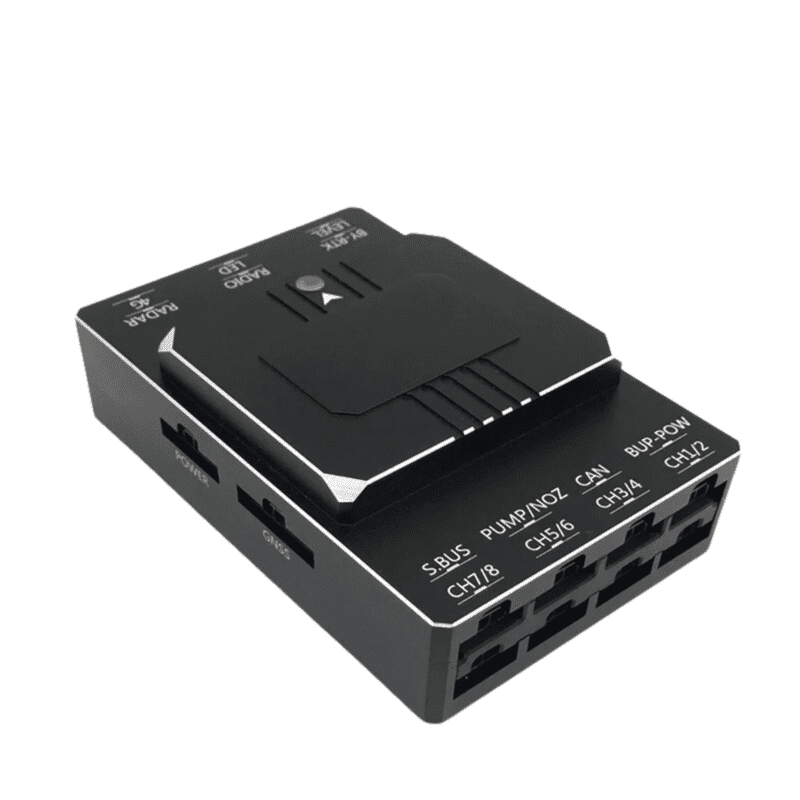Trustworthy Drone Navigating with SparkNavi Drone Flight Controller and GNSS/INS Made in Taiwan
Trustworthy Drone Navigating with SparkNavi Drone Flight Controller and GNSS/INS Made in Taiwan
Blog Article
Understanding the Essential Attributes and Functions of a Drone Trip Controller for Optimum Airborne Performance
The trip controller serves as the essential part in a drone's design, coordinating its activities and making sure stability with an innovative interplay of data and sensing units processing. With improvements in modern technology, the landscape of trip controllers is rapidly evolving, prompting a closer assessment of what genuinely defines optimal capability in this important system.
Summary of Trip Controllers
When exploring the world of drone modern technology, comprehending trip controllers is vital for both experts and hobbyists alike. Flight controllers serve as the mind of the drone, managing its activities and making certain security during trip (SparkNavi drone flight controller and GNSS/INS made in taiwan). They refine data from various sensors, consisting of accelerometers, measures, and gyroscopes, to maintain equilibrium and respond to pilot inputs efficiently
The architecture of flight controllers can differ substantially, ranging from standard versions designed for entry-level drones to innovative systems equipped with innovative features for specialist applications. The combination of GPS capacities allows specific navigating and positioning, while programmable firmware allows users to tailor trip attributes to fit their certain demands.
Furthermore, flight controllers are pivotal in promoting communication between the drone and the remote control, making it possible for real-time adjustments and telemetry information transmission. Understanding the different sorts of trip controllers, including multi-rotor, fixed-wing, and crossbreed systems, is important for picking the suitable version for an offered application. Eventually, a thorough grasp of trip controllers not just boosts the flying experience however likewise makes the most of the performance and security of drone operations.
Key Features of Trip Controllers
Trip controllers play a crucial function in handling a drone's flight characteristics by carrying out a number of crucial features that make certain stability and responsiveness. Among the main features is the stablizing of the drone's positioning and altitude. This is attained via the assimilation of different sensors, consisting of accelerometers, measures, and gyroscopes, which constantly keep an eye on the drone's setting and activity.
.jpg)
One more important feature is the processing of control inputs from the pilot or self-governing systems. The flight controller analyzes these inputs and readjusts the drone's electric motor rates as necessary to achieve the wanted trip path. This includes managing roll, pitch, and yaw, which are important for ability to move.
Additionally, trip controllers are equipped with foolproof devices. These functions are designed to respond to critical circumstances, such as low battery degrees or loss of signal, by initiating predefined actions like returning to the launch factor or hovering in position.

Vital Functions to Think About
When picking a drone flight controller to make sure optimum performance and dependability,Numerous necessary attributes must be taken right into account. One crucial element is the controller's handling power, which establishes its capacity to take care of complex trip formulas and real-time information processing. A higher handling capability boosts responsiveness and security throughout flight.
One more essential feature is the variety of supported trip modes. A functional flight controller must supply various settings, including acro, altitude hold, and GPS-assisted settings, catering to find more information different pilot ability hop over to here levels and functional scenarios. In addition, the visibility of built-in safety functions, such as fail-safes and geofencing, can considerably enhance operational protection.
Compatibility with various communication methods is likewise essential, as it makes certain smooth integration with various other devices and peripherals, such as remote controllers and telemetry systems. In addition, the controller's firmware have to be user-friendly and consistently updated to integrate new functions and optimizations.
Combination With Sensing Units and Solutions
A flight controller's performance is heavily influenced by its capacity to incorporate with various sensors and systems. This assimilation is important as it allows the trip controller to obtain real-time information needed for reliable flight administration. Secret sensors consist of GPS, inertial measurement units (IMUs), barometers, and magnetometers, each giving essential details concerning the drone's alignment, placement, and elevation.

Additionally, advanced flight controllers sustain assimilation with haul systems, consisting of cameras and various other sensing units, allowing enhanced capabilities such as independent navigation and obstacle avoidance. This interconnectedness not only enhances the drone's operational capabilities however also broadens its application prospective Visit Your URL throughout various markets, from aerial digital photography to agricultural surveillance. Hence, a well-integrated trip controller is fundamental for achieving optimal aerial efficiency and guaranteeing the reliability of drone operations.
Tips for Optimizing Efficiency
To take full advantage of the efficiency of your drone, several key methods can be employed that concentrate on optimizing both equipment and software components. Ensure that the flight controller firmware is up to day. Makers regularly launch updates that boost security, boost functionality, and repair pests. Consistently inspecting for these updates can significantly influence your drone's efficiency.
Following, adjust your sensing units, consisting of the accelerometer and gyroscope, to ensure accurate analyses. Proper calibration minimizes drift and boosts trip security, specifically during complex maneuvers. Additionally, think about upgrading the hardware components, such as props and electric motors, to enhance drive and performance. Top quality props can minimize drag and increase flight time.
In addition, enhance your drone's weight by minimizing unnecessary payloads. A lighter drone not just performs far better but additionally expands battery life. Adjust your trip setups, including PID (Proportional, Integral, Acquired) worths, to accomplish receptive and smooth handling. By applying these approaches, drone operators can significantly boost aerial efficiency, bring about a much more pleasurable and effective flying experience.
Conclusion
Finally, a comprehensive understanding of drone trip controllers is vital for enhancing aerial efficiency. The combination of vital features and essential attributes, including processing power and safety mechanisms, directly affects the stability and maneuverability of drones. Additionally, effective interaction with different sensors and systems plays a crucial duty in achieving accurate navigation and functional efficiency. By focusing on these aspects, drivers can dramatically boost the performance and integrity of their drone systems in diverse applications.
Trip controllers serve as the mind of the drone, coordinating its activities and making sure security during flight.Trip controllers play a critical duty in managing a drone's flight characteristics by executing several vital functions that ensure stability and responsiveness. The flight controller translates these inputs and adjusts the drone's motor rates as necessary to achieve the desired trip course.Many crucial attributes must be taken right into account when choosing a drone trip controller to make certain optimum performance and dependability. Therefore, a well-integrated trip controller is fundamental for achieving ideal airborne efficiency and making certain the reliability of drone operations.
Report this page